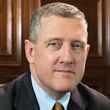President's Message: Reassessing Monetary Policy at the Zero Lower Bound
What should monetary policymakers do when the policy rate is effectively at zero? Several colleagues and I have released a working paper that we hope will contribute to the ongoing debate on this question.1
Since the financial crisis, the main monetary policy recommendations for stimulating the economy after hitting the zero lower bound have consisted of quantitative easing and forward guidance. Quantitative easing—which refers to buying publicly issued or privately issued debt—seems to be effective according to the empirical literature but not the theoretical literature. To summarize former Fed Chairman Ben Bernanke, quantitative easing works in practice but not in theory.2 Forward guidance, which has had a lot of influence at central banks around the world during the period when rates have been near zero, refers to public promises by policymakers to keep the policy rate at zero even longer than they otherwise would. Conventional theory suggests that forward guidance should lead to good outcomes for the economy, such as higher current consumption, and eventually to higher inflation.
Unfortunately, despite keeping nominal policy rates near zero for several years in the U.S. and the eurozone and for even longer in Japan, the expected consumption boom and increase in inflation have arguably not materialized. Whether these effects will happen in the future remains an open question, but because the core prediction has not yet come to pass, some researchers are rethinking monetary policy at the zero lower bound. Newer theories consider aspects of monetary policy beyond the most traditional views that have dominated thinking in the past five years.3 It is an apt time to reassess the current thinking and to explore other models.
Somewhat ironically, even though the 2007-2009 financial crisis was about problems in credit markets, leading monetary policy advice today is based on models that de-emphasize credit markets. In contrast, our paper puts heavy emphasis on the performance of the private credit market. This market plays an important role in how the economy operates in our model, which, it is interesting to note, has considerable income inequality. In the model, households in the middle of the life cycle are peak earners, but at the beginning and end of the cycle, people are earning little. Those in the middle part save for their eventual retirement later in the life cycle, and those in the early part borrow for purchases such as houses and cars. This is a real phenomenon that accounts for a large portion of actual borrowing and lending in the economy—for instance, mortgage debt outstanding is on the order of $13 trillion in the U.S. If this credit market did not exist, households would have to consume whatever they earned in a particular period. Therefore, in this model the credit market must work well in order to allow all the different members of society to reallocate income over their life cycle so they can consume smoothly.
Along with this emphasis on the private credit market, we assume one important credit market imperfection: Contracts between borrowers and lenders must be made in nominal terms and cannot depend on the state of the economy. This essentially means that debt contracts are insufficiently flexible when shocks hit the economy. Economists have long thought that this credit market friction may be quite important. The role of monetary policy in the model is then to fix this credit market imperfection by adjusting the price level appropriately in response to shocks. This keeps credit markets working smoothly. In addition, when the economy encounters the zero lower bound because of an exceptionally large negative shock, monetary policy can keep credit markets working well by allowing a special upward adjustment in the price level.
The upshot is that the optimal monetary policy in this model is something very close to nominal gross domestic product (GDP) targeting. With such a policy, inflation would be relatively high in periods of low growth and relatively low in periods of high growth—an equilibrium outcome quite different from what has been observed in the U.S. in recent decades. At the zero lower bound, forward guidance would not be a good policy, and the effects of quantitative easing are unclear. Thus, the policy implication of our model at the zero lower bound is different from the two main policy recommendations in recent years.
Our paper is an academic exercise meant to provoke discussion about longer-run issues in monetary policy; it is not meant to have implications for immediate policy decisions. The results in our paper may help to inform the debate about appropriate monetary policy at the zero lower bound, and we encourage further research on the topic.
Endnotes
- See Costas Azariadis, James Bullard, Aarti Singh and Jacek Suda, "Optimal Monetary Policy at the Zero Lower Bound," Federal Reserve Bank of St. Louis Working Paper 2015-010A, May 2015, at https://research.stlouisfed.org/wp/2015/2015-010.pdf. [back to text]
- See Ben Bernanke's interview with Liaquat Ahamed on Jan. 16, 2014, "A Conversation: The Fed Yesterday, Today and Tomorrow," at www.brookings.edu/events/2014/01/16-central-banking-after-the-great-recession-bernanke. [back to text]
- For example, see Kevin D. Sheedy, "Debt and Incomplete Financial Markets: A Case for Nominal GDP Targeting," Brookings Papers on Economic Activity, Spring 2014, pp. 301-61. See also my comments on this paper on pp. 362-68 at www.brookings.edu/~/media/projects/bpea/spring%202014/2014a_sheedy.pdf. [back to text]
Views expressed in Regional Economist are not necessarily those of the St. Louis Fed or Federal Reserve System.
For the latest insights from our economists and other St. Louis Fed experts, visit On the Economy and subscribe.
Email Us


